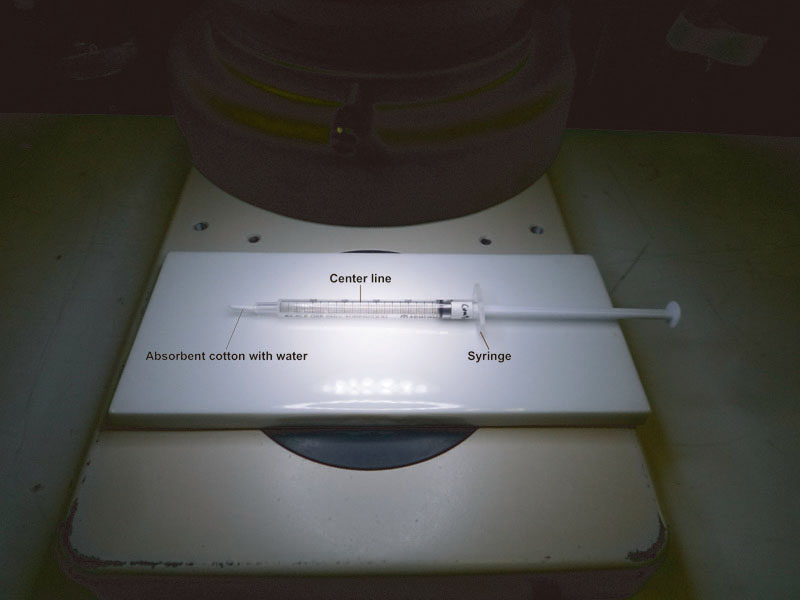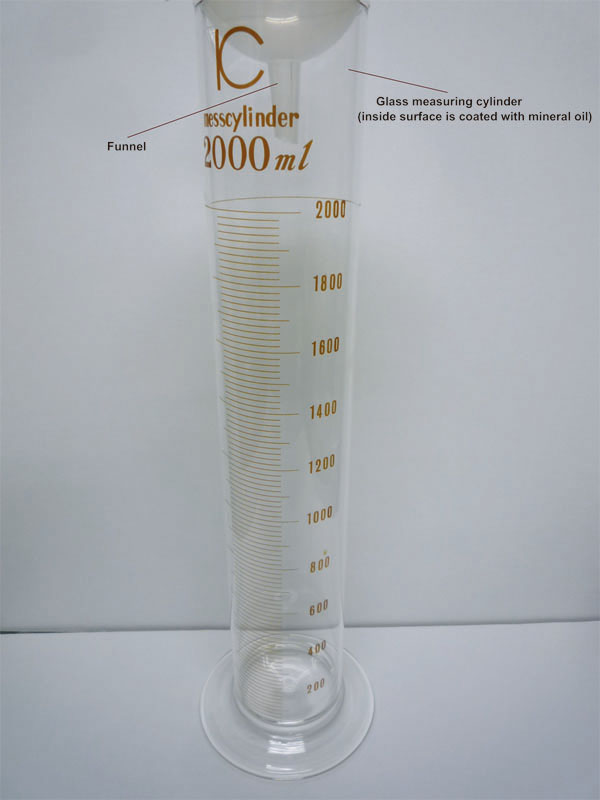Drosophila melanogaster is useful model organism for studying on biology. A variety of methods for analyzing a various kinds of phenotypes are developed. Here, we introduce easy behavioral assays for evaluating the function of nervous or muscular system. |
| Category | Glycogene transgenic animals |
| Protocol Name | Behavioral analysis in Drosophila melanogaster |
Authors
 |
Ueyama, Morio
Laboratory of Cell Biology, Department of Bioinformatics, Faculty of Engineering, Soka University
Nishihara, Shoko
*
Laboratory of Cell Biology, Department of Bioinformatics, Graduate School of Engineering, Soka University
*To whom correspondence should be addressed.
|
| KeyWords |
|
Reagents
 |
|
Instruments
 |
| ● |
1 mL-Syringe (58 mm tall and 6 mm in diameter: we use TERMO® syringe. Ca.#SS-01T) |
| ● |
|
| ● |
Glass measuring cylinder (2000 mL) |
| ● |
|
| ● |
Glass vials (240 mm tall and 25 mm in diameter) |
| ● |
|
|
| Methods |
|
1. |
|
| 1) |
Put a fly in the syringe gently (see Comment). |
Comment 1
|

|
| 2) |
After a 5-min rest, score the number of times the fly crossed the center (0.5 mL mark) of the syringe in the next 5 min. |
Comment 0
|

|
| 3) |
Perform 10–20 individuals, and calculate the average times the fly crossed. |
Comment 0
|
|
|
|
2. |
|
| 1) |
Dump twenty individual flies through a funnel into a glass cylinder of which inside surface is coated with mineral oil. |
Comment 0
|

|
| 2) |
Record the scores individually, and calculate the scores average from 5 independent experiments (see Comment). |
Comment 1
|
|
|
|
3. |
|
| 1) |
Introduce twenty individual flies into a glass vial gently (see Comment). |
Comment 1
|

|
| 2) |
After a 5-min rest, tap the bottom of the vial. |
Comment 0
|

|
| 3) |
Record the height reached in 10 sec by a digital camera. |
Comment 0
|

|
| 4) |
Perform five trials in each experiment, and calculate climbing ability (average ± standard error) from the 5 trials. |
Comment 0
|
|
|
| Notes | The flies are reared at 25 degree using a cornmeal-yeast-glucose standard medium under natural light conditions. Adult flies are collected within 8 h of eclosion. Every two days, adult flies are transferred a fresh food vial. All behavioral experiments should be done during daytime. |
| Figure & Legends |
Figure & Legends


Fig. 1. Tools for locomotion assay


Fig. 2. Tools for flight assay |
| Copyrights |
 Attribution-Non-Commercial Share Alike Attribution-Non-Commercial Share Alike
This work is released underCreative Commons licenses
|
| Date of registration:2014-05-19 13:46:43 |
- Kulkarni, S. J., and Hall, J. C. (1987) Behavioral and cytogenetic analysis of the cacophony courtship song mutant and interacting genetic variants in Drosophila melanogaster. Genetics 115, 461-475. [PMID : 3106148]
- Friggi-Grelin, F., Coulom, H., Meller, M., Gomez, D., Hirsh, J., and Birman, S. (2003) Targeted gene expression in Drosophila dopaminergic cells using regulatory sequences from tyrosine hydroxylase. J. Neurobiol. 54, 618-627. [PMID : 12555273]
- Stockinger, P., Kvitsiani, D., Rotlopf, S., Tirian, L., and Dickson, B. J. (2005) Neural circuitry that governs Drosophila male courtship behavior. Cell 121, 795-807. [PMID : 15935765]
- Ueyama, M., Akimoto, Y., Ichimiya, T., Ueda, R., Kawakami, H., Aigaki, T., and Nishihara, S. (2010) Increased apoptosis of myoblasts in Drosophila model for the Walker-Warburg syndrome. PLoS ONE 5, e11557. [PMID : 20644630]
|
This work is licensed under Creative Commons Attribution-Non-Commercial Share Alike. Please include the following citation
How to Cite this Work in an article:
Ueyama, Morio,
Nishihara, Shoko,
(2014). GlycoPOD https://jcggdb.jp/GlycoPOD.
Web.20,4,2024 .
How to Cite this Work in Website:
Ueyama, Morio,
Nishihara, Shoko,
(2014).
Behavioral analysis in Drosophila melanogaster.
Retrieved 20,4,2024 ,
from https://jcggdb.jp/GlycoPOD/protocolShow.action?nodeId=t183.
html source
Ueyama, Morio,
Nishihara, Shoko,
(2014).
<b>Behavioral analysis in <em>Drosophila melanogaster</em></b>.
Retrieved 4 20,2024 ,
from <a href="https://jcggdb.jp/GlycoPOD/protocolShow.action?nodeId=t183" target="_blank">https://jcggdb.jp/GlycoPOD/protocolShow.action?nodeId=t183</a>.
Including references that appeared in the References tab in your work is
much appreciated.
For those who wish to reuse the figures/tables, please contact JCGGDB
management office (jcggdb-ml@aist.go.jp).
|
|